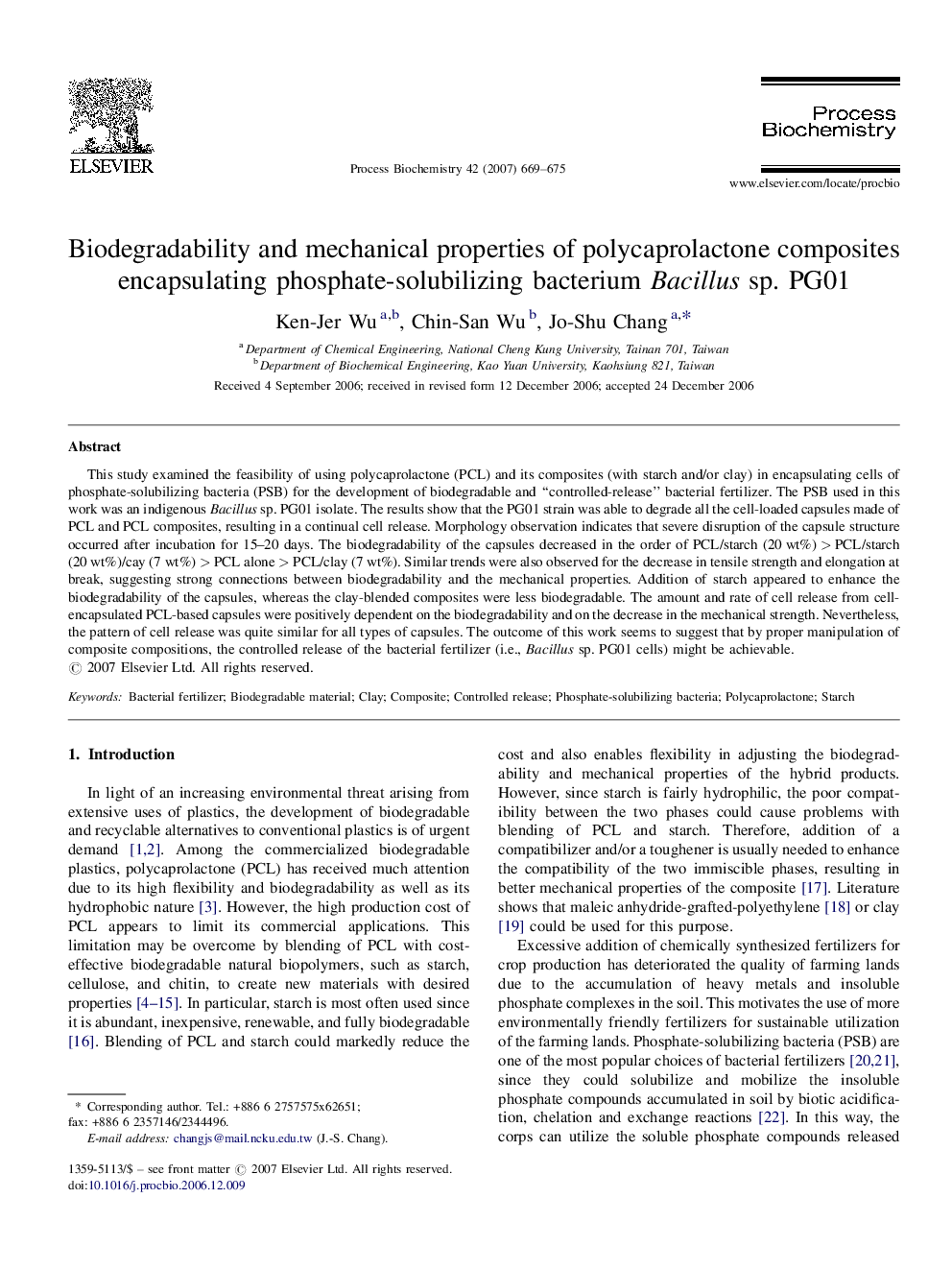| Article ID | Journal | Published Year | Pages | File Type |
|---|---|---|---|---|
| 36024 | Process Biochemistry | 2007 | 7 Pages |
This study examined the feasibility of using polycaprolactone (PCL) and its composites (with starch and/or clay) in encapsulating cells of phosphate-solubilizing bacteria (PSB) for the development of biodegradable and “controlled-release” bacterial fertilizer. The PSB used in this work was an indigenous Bacillus sp. PG01 isolate. The results show that the PG01 strain was able to degrade all the cell-loaded capsules made of PCL and PCL composites, resulting in a continual cell release. Morphology observation indicates that severe disruption of the capsule structure occurred after incubation for 15–20 days. The biodegradability of the capsules decreased in the order of PCL/starch (20 wt%) > PCL/starch (20 wt%)/cay (7 wt%) > PCL alone > PCL/clay (7 wt%). Similar trends were also observed for the decrease in tensile strength and elongation at break, suggesting strong connections between biodegradability and the mechanical properties. Addition of starch appeared to enhance the biodegradability of the capsules, whereas the clay-blended composites were less biodegradable. The amount and rate of cell release from cell-encapsulated PCL-based capsules were positively dependent on the biodegradability and on the decrease in the mechanical strength. Nevertheless, the pattern of cell release was quite similar for all types of capsules. The outcome of this work seems to suggest that by proper manipulation of composite compositions, the controlled release of the bacterial fertilizer (i.e., Bacillus sp. PG01 cells) might be achievable.
